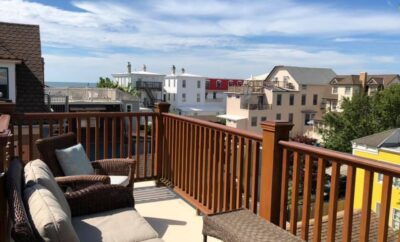Cape May New Jersey’s Historic Homes
Cape May New Jersey’s Historic Homes located on the southern coast of New Jersey, is renowned for its well-preserved Victorian architecture and is often referred to as a “living museum” of historic homes. The city’s Historic District, which encompasses areas such as Hughes Street and Jackson Street, is a treasure trove of stunning architectural gems that provide a glimpse into the past. In this article, we’ll take a closer look at Cape May’s historic homes in the Historic District, their history, and their significance.
Cape May’s Historic Homes: A Walk Through History
The Historic District of Cape May is a designated National Historic Landmark and boasts over 600 well-preserved Victorian buildings, making it one of the largest collections of such architecture in the country. The area is known for its diverse architectural styles, including Gothic Revival, Italianate, Second Empire, Queen Anne, and Stick Style, among others.
One of the most iconic streets in the Historic District is Hughes Street, known for its row of grand Victorian homes that showcase the city’s rich history. Many of these homes were built in the mid- to late-1800s by wealthy families who flocked to Cape May as a fashionable seaside resort. These homes feature ornate details such as gingerbread trim, stained glass windows, and decorative porches, which are characteristic of the Victorian era.
Another notable street in the Historic District is Jackson Street, which is lined with beautiful Victorian homes that have been meticulously restored and preserved. These homes showcase the architectural craftsmanship and opulence of the era, with their intricate detailing, vibrant colors, and unique designs. Many of these homes have been converted into bed and breakfasts or guesthouses, offering visitors a chance to experience the grandeur of the past.
History and Significance of Cape May’s Historic Homes
Cape May’s historic homes hold a significant place in American architectural history. In the 19th century, Cape May was a popular destination for wealthy families seeking a summer retreat, and many of the homes in the Historic District were built as vacation homes for these affluent families. These homes were designed by renowned architects of the time and served as a symbol of wealth, prestige, and social status.
Over the years, Cape May’s historic homes have witnessed significant events and changes, including the devastating fire of 1878 that destroyed a large portion of the city. However, thanks to the efforts of preservationists and the Cape May Historic Preservation Commission, many of these homes have been restored and maintained, preserving their original charm and historical significance.
Exploring Cape May’s Historic Homes
Visitors to Cape May can take a stroll through the Historic District and marvel at the exquisite architecture of the historic homes. Many of these homes are privately owned and not open to the public, but some are open for tours or can be admired from the outside.
The Emlen Physick Estate, located on Washington Street, is a must-visit for history enthusiasts. This impeccably restored Victorian mansion, built in 1879, offers guided tours that provide insights into the lives of the Physick family and the history of Cape May. The estate also hosts special events and programs that highlight the cultural heritage of the region.
The Cape May Historic District also offers various walking tours and self-guided tours that allow visitors to explore the streets and alleys lined with historic homes at their own pace. These tours provide an opportunity to learn about the architectural styles, history, and stories associated with the homes in the area.

